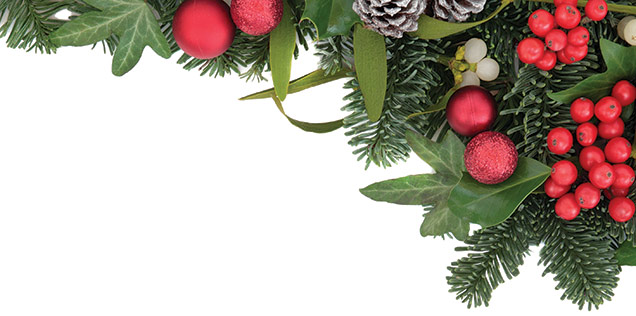Yule: Discovering the origins

Everyone knows the traditional 12 days of Christmas, the Yule log, the Christmas tree, but does anyone know where these traditions came from, as they don’t actually originate from Christianity. Instead, these traditions come from the Germanic Pagan holiday of Yule, or Jól.
Yule was traditionally the way European Pagans worshipped the winter solstice – when twilight is the longest and darkest of the year. The main idea was to bring as much nature inside the home to show spring how much it was missed and revered by human worshippers, in the hopes that the gods would bring back the life-giving season.
In order to worship the deities, believers would make wreaths out of fallen branches, which is where the more recent idea of pine, spruce and fir trees being brought into the home and being decorated came from. Decking the halls with boughs of holly is also part of this ritual.
While modern-day adherents like Western University grad Katherine Vanderhaeghe don’t necessarily believe in the supernatural aspect of the holiday, Yule today still holds reverence for nature and understanding its importance in our lives.
“Yule is a celebration of the changing seasons ... of winter and an acknowledgement that summer will return,” she said. “[It’s] a reminder that we need both in order to keep the natural cycle going.”
“I [chose] Yule because, though it does have a lot of spiritual aspects, a lot of the beliefs are based in common sense and a respect for our natural environment.”
Although she’s not a Christian, Vanderhaeghe found her ancestors once practiced Yule as well.
“A lot of people celebrate Christmas, despite not believing in any of the lore, and so celebrating Christmas to me seemed disingenuous,” Vanderhaeghe said. “It also doesn’t hurt that Yule has 12 days of gift giving.”
She noted that after doing research through her former school’s library, beginning to practice Yule was actually pretty easy.
“I [first] learned about Yule online,” Vanderhaeghe said. “I found out that I already knew a lot of the traditions because they have been so interwoven into the holiday of Christmas.”
Remember the Yule log mentioned earlier? This tradition comes from Lussinatta, also known as Lussi Night, originally held on Dec. 12. The original purpose of the log burning through the night was to stop Lucia – an evil witch – from flying down chimneys and wreaking havoc on both possessions and life itself. After the log was fully burned, the ashes were spread across vegetable gardens for good luck, which actually worked as a fertilizer for the following year’s crops.
Children were told bad behaviour would cause Lussi to snatch them from their homes, taking them away to make soup out of the miscreants. Ghosts and other supernatural creatures would roam the night, and in order to stop them from entering the home, a fire had to stay lit through the evening, with a grand feast and party complementing the fire until sunrise. This party went on for 12 to 13 days, ending around December 24 or 25 with gift giving and a further celebration of nature.
Later, the Catholic Church re-appropriated Lussi, with St. Lucy or Lucia – a woman who, by church accounts, lived and died at the hands of some terrible Romans. Today, St. Lucy’s day is a common religious holiday held on December 13 in Scandinavian countries that are home to Europe’s original Germanic Pagan population that was converted to Christianity through the pervasive assimilation of its culture. This is a pattern t h a t shows up time and time again, from the Zoroastrian Monomyth to the literal intertwining of Celtic heritage into the Irish Cross.
For Vanderhaeghe, celebrating Yule is ultimately a holiday that encourages honesty.
“The traditions of Yule are much less important to me than the intent and emotion of Yule,” Vanderhaeghe said. “Because [Yule] is such a historical holiday, it has many different peoples celebrating, meaning that there is no single right way.”
“Yule is more open to interpretation than other religious holidays.”
So before singing carols, decorating the house and telling those traditional Christmas stories, stop for a minute to look into the origin of what you’re doing. It may just tell you something you didn’t know about your own family tree.














